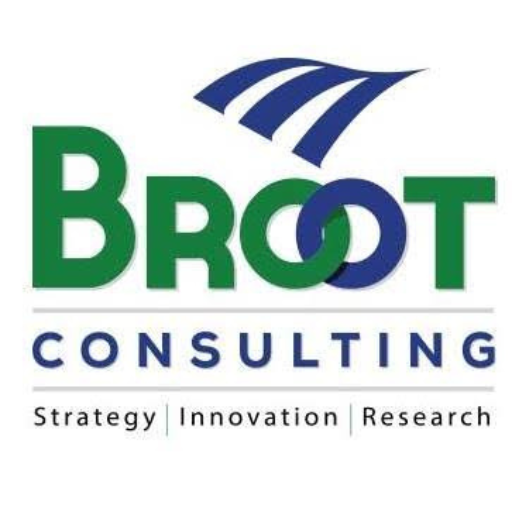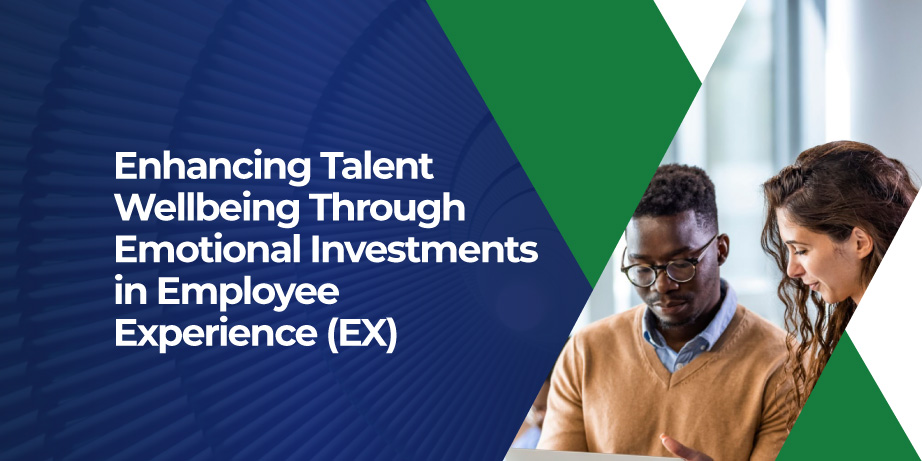Enhancing Talent Wellbeing Through Emotional Investments in Employee Experience (EX)
The 2023 global data on employee engagement reveals some compelling insights about the state of the global workforce. The Gallup State of the Global Workplace Report 2023 indicates a historic peak, with approximately 23% of workers worldwide actively engaged in their jobs. However, the report also points out that a significant chunk of the workforce, nearly 59%, are doing just enough to meet their job requirements, falling into the category of ‘quiet quitters.’ The report further emphasizes that the lack of engagement among employees is leading to a substantial productivity loss, estimated at $8.8 trillion globally, or about 9% of the global GDP.
Looking at regional engagement, South Asia leads with the highest engagement levels at 33%, whereas Europe trails with the lowest, with just 13% of its workforce feeling engaged. In the United States, there’s a noted dip in engagement levels to 31% in 2023, marking a 2% decline from the previous period. The report underscores the financial impact of engagement, stating that business units with high employee engagement see up to 21% greater profitability, thus highlighting the crucial connection between employee engagement and business performance.
Despite the economic headwinds and the lingering effects of the pandemic, employee engagement within Africa is on an upward trajectory. As per a study by Africa People Advisory spanning the continent, the aggregate score for employee engagement is a commendable 74%, with ‘Meaningful Work’ and ‘Connectedness to Purpose’ emerging as the strongest facets. The role of leadership is also underscored, with a 76% approval rating for the leadership dimension, underscoring the significant influence leaders have on employee engagement.
Corporate Culture and Employee Experience
We emphasize the essence of a good corporate culture for employee engagement. The overall employee experience is also important for employees’ performance and organizational growth. Beyond performance, we need to pay attention to the lasting effects of the employee experience; the CV can be great but with a brutal experience. This is why we have highly skilled people with nasty attitudes. We have managers and leaders in organizations that lack empathy. For most of them, they are only manifesting the accumulation of their employee journey. No one can give what they don’t have or haven’t experienced before. On this basis, we need to create a vibrant awareness of the need for workplace empathy.
“… if you can put staff first, your customers second, and shareholders third, effectively, in the end, the shareholders do well, the customers do better, and your staff remains happy.” -Sir Richard Branson.
Employee experience is the day-to-day encounters an employee has in the course of his or her work. This covers even the commuting experience. If the commuting experience is unpleasant, an employee will start the day already ruffled. This explains why an organization needs to pay careful attention to total rewards. Imagine why some organizations provide employee commuting buses. Some even provide vehicle loans, while others add drivers or chauffeurs as an employee benefit. Aside from the commuting experience, the other activities and emotions an employee encounters during work form their employee experience. It could be the presence or absence of a Bring Your Own Device (BYOD) policy or a frustrating work process.
Employee Output Driven by Prevailing Experience
Employee experience impacts how an employee thinks about his or her work. This perception of work is formed from how employees feel. It is, therefore, important to pay attention to employee’s feelings. This is where empathy comes in. The importance of empathy cannot be over-mentioned in an organization. A positive employee experience leads to having extra-milers in an organization, which translates into much more productivity and growth. Employees with a positive employee experience will show up at work inspired, energized and enthusiastic to get the job done. The organisation’s interest will be paramount in their heart, and they will move to action even before being called.
On the contrary, a negative employee experience leads to having more deadwood or disengaged employees in an organization. When an organization receives more sick leave requests and employees call in sick or slam the organisation with different kinds of emergencies and reasons not to be at work or a meeting, while some can be for genuine reasons, this signals disengagement in the workforce. There was a case of an actively engaged employee who was going through many life challenges, with many of her loved ones hospitalized at the same time. Yet, she connected virtually to her meetings from the hospital and other care locations. Even when the organization mandated her to take leave to care for her family, she would still join her meetings but not comment. Instead, she nudged her colleagues to comment and drive in the right direction. The point here is that when employees are engaged, they have a can-do spirit despite their situation. On the contrary, when employees are very pessimistic and impossible, it could be pointing to the fact that employees are not having a good experience and hence throwing tantrums.
Driving Employee Experience
Employee experience requires an intentional approach because it is holistic and an end-to-end approach where employee welfare and well-being are paramount. This will impact the approaches to reward systems, learning and development, diversity, equity and inclusion, work-life balance considerations, flexibility, collective and creative leadership, and sustainability practices. Importantly, the success of any employee experience design depends on HR products and services that strengthen people’s emotional connection towards their jobs. This requires co-creation and a solid internal communications strategy. In all, there is no magic formula to employee experience design. What will never fail is the golden rule: treat others how you would want to be treated. Again, this echoes EMPATHY.
Jacob Morgan, the author of The Employee Experience Advantage, noted that employee experience, regardless of the size and scope of the organization, is influenced by three major factors: cultural, technological and physical. An intentional focus on these environmental factors will lead to a workplace where employees always want to show up. Basically, to guarantee a good experience, employees want to work in an environment where they are happy to show up every day, an environment that helps them grow and achieve their potential, an environment where they can have a sense of connection and belonging, and an environment where they feel valued or cared for. To attain this environment that can guarantee good employee experience (EX) for talents, it is critical to define and drive a culture that promotes flexibility, good communication, trust, regular feedback, learning and the use of modern infrastructure that will build employees not only for the growth and success of the organization but also for their future encounters. When people receive wholehearted goodness, their interpretation of the world will be goodness. However, when hostility dominates people’s experiences, consciously or unconsciously, they become toxic. Those who choose not to be toxic, coming from horrible experiences, must intentionally go through therapy to get over the trauma of poor experiences. Truth be told, many people have lived poor lives because of their employee journey and employee experiences all through their career journey.
So far, the article has emphasized the importance of a positive employee experience to employees. However, organizations also benefit from creating a positive employee experience for their people:
- A better employment brand: Organizations that promote a positive employee experience is indirectly building an employment brand that will attract top talents. Attracting the right people is critical to attaining the goals of an organization.
- Employee retention: If employees can find peace, trust, growth, and financial reward in a work environment, it will be difficult for them to leave without stronger benefits or offerings elsewhere. In other words, the presence of these benefits that create and sustain a positive employee experience promotes loyalty from employees to their employer. There is a case where a high-performing employee got an offer from a competition that he could not decline. The offer was too mouth-watering that he had to choose between loyalty and an exponential career growth. He played wise in making his choice by discussing it with his current employer and his to-be employer. In other words, he resigned well, ensured the current employer got a good replacement, and helped to settle-in his replacement. Then, he moved on with his new employer but remained an ambassador for his previous employer.
- Performance enhancement: Organizations that pay the utmost attention to EX will experience exponential growth. When people are happy, they become extra-milers, going above and beyond to exceed set targets. They become very vested in organizational growth and have a shared ownership mindset. There was a cluster of talents, and one talent noted that no amount of poaching strategy from a recruiter could get him to leave his current employer. He further noted that with his current employer, he has experienced flexibility, financial rewards, bonuses, fully-paid travel and holiday allowances. This talents feels fulfilled and also sees clarity for the future via a well charted career path.
- Employee engagement and customer satisfaction: Organizations that prioritize EX will not only retain employees but will also have very engaged employees. Engaged employees are full of possibilities. This will influence customer satisfaction and, overall brand growth and positive perception.
Thinking of Emotional Investments in Employee Experience? Consider:
- A top-down approach: Leadership should be committed to leading with empathy and active listening. This might require some investment in leadership training towards this necessary mindset shift.
- Redefining the workplace culture: It is imperative to shift towards a culture that promotes inclusivity, positivity, trust, well-being, recognition and respect. It is simple: just tell people to be conscious of the golden rule: treat others as you would want to be treated.
- Mental health sensitivity: Organizations should never stop creating awareness of mental health. HR products should also be designed in favour of this, such as total rewards redesign, engagement activities, and adjustment of employee policies to accommodate some flexibility, amongst others.
- An open and inclusive environment: Where feedback is encouraged with no fear of being victimized. Toxic behaviours should be collectively discouraged, and an environment of trust should be built. Usually, this is top-down. People adjust to the leadership style.
In conclusion, a positive Employee Experience (EX) requires attention from organisational leaders. The benefits are for the present and future of the individual talents and the organization where they currently work and where they will later work. Employee experience is always a build-up in an employee’s journey. This experience impacts even the other aspects of their lives. Contingent on securing a good employee experience is promoting a culture of empathy, trust, learning and togetherness.
Written by:
Gbemi Ibrahim, PMP, GPHR, MCIPM.






This Post Has 2 Comments
I’m really inspired with your writing skills as neatly as with the structure on your blog.
Is this a paid subject or did you modify it yourself?
Anyway keep up the nice high quality writing, it is
uncommon to look a nice weblog like this one nowadays..
I think this is one of the most significant info for me.
And i’m glad reading your article. But should
remark on some general things, The website style
is wonderful, the articles is really nice : D.
Good job, cheers